《C++ Primer Plus》(第6版)第13章编程练习
《C++ Primer Plus》(第6版)第13章编程练习
- 《C++ Primer Plus》(第6版)第13章编程练习
- 1. Cd类
- 2. 使用动态内存分配重做练习1
- 3. baseDMA、lacksDMA、hasDMA类
- 4. Port类和VintagePort类
《C++ Primer Plus》(第6版)第13章编程练习
1. Cd类
以下面的类声明为基础:
class Cd { //represents a CD disk
private:char performers[50];char label[20];int selections; //number of selectionsdouble playtime; //playing time in minute
public:Cd(char* s1, char* s2, int n, double x);Cd(const Cd& d);Cd();~Cd();void Report() const; //reports all CD dataCd& operator=(const Cd& d);
};
派生出一个Classic类,并添加一组char成员,用于存储指出CD中主要作品的字符串。修改上述声明,使基类的搜有函数都是虚的。如果上述定义声明的某个方法并不需要,则请删除它。使用下面的程序测试您的产品:
#include<iostream>
using namespace std;
#include"classic.h"void Bravo(const Cd& disk);int main()
{Cd c1("beatles", "Capitol", 14, 35.5);Classic c2 = Classic("Piano Sonata in B flat, Fantasia in C", "Alfred Brendel", "Philips", 2, 57.17);Cd* pcd = &c1;cout << "Using object directly:\n";c1.Report(); //use Cd methodc2.Report(); //use Classic methodcout << "Using type cd *pointer to objects:\n";pcd->Report(); //use Cd method for cd objectpcd = &c2;pcd->Report(); //use Classic method for classic objectcout << "Calling a function with a Cd reference argument:\n";Bravo(c1);Bravo(c2);cout << "Testing assignment: ";Classic copy;copy = c2;copy.Report();return 0;
}void Bravo(const Cd& disk)
{disk.Report();
}
代码:
cd.h:
#ifndef CD_H_
#define CD_H_class Cd
{ // represents a CD disk
private:char performers[50];char label[20];int selections; // number of selectionsdouble playtime; // playing time in minutepublic:Cd(char *s1, char *s2, int n, double x);Cd(const Cd &d);Cd();virtual ~Cd();virtual void Report() const; // reports all CD datavirtual Cd &operator=(const Cd &d);
};#endif
cd.cpp:
#include "cd.h"
#include <iostream>
#include <cstring>Cd::Cd(char *s1, char *s2, int n, double x)
{strncpy(performers, s1, 49);performers[49] = '\0';strncpy(label, s2, 19);label[19] = '\0';selections = n;playtime = x;
}
Cd::Cd(const Cd &d)
{strncpy(performers, d.performers, 49);performers[49] = '\0';strncpy(label, d.label, 19);label[19] = '\0';selections = d.selections;playtime = d.playtime;
}
Cd::Cd()
{performers[0] = '\0';label[0] = '\0';selections = 0;playtime = 0.0;
}
Cd::~Cd()
{
}
void Cd::Report() const
{using std::cout;using std::endl;cout << "Information:\n";cout << "Performers: " << performers << endl;cout << "Label: " << label << endl;cout << "Selections: " << selections << endl;cout << "Playtime: " << playtime << endl;
}
Cd &Cd::operator=(const Cd &d)
{if (this == &d)return *this;strncpy(performers, d.performers, 49);performers[49] = '\0';strncpy(label, d.label, 19);label[19] = '\0';selections = d.selections;playtime = d.playtime;return *this;
}
classic.h:
#ifndef CLASSIC_H_
#define CLASSIC_H_#include "cd.h"class Classic : public Cd
{
private:char majorWorks[50];public:Classic(char *m, char *s1, char *s2, int n, double x);Classic(char *m, const Cd &cd);Classic();virtual ~Classic();virtual void Report() const;virtual Classic &operator=(const Classic &c);
};#endif
classic.cpp:
#include "classic.h"
#include <iostream>
#include <cstring>Classic::Classic(char *m, char *s1, char *s2, int n, double x) : Cd(s1, s2, n, x)
{strncpy(majorWorks, m, 49);majorWorks[49] = '\0';
}
Classic::Classic(char *m, const Cd &cd) : Cd(cd)
{strncpy(majorWorks, m, 49);majorWorks[49] = '\0';
}
Classic::Classic() : Cd()
{majorWorks[0] = '\0';
}
Classic::~Classic()
{
}
void Classic::Report() const
{using std::cout;using std::endl;Cd::Report();cout << "Major works: " << majorWorks << endl;
}
Classic &Classic::operator=(const Classic &c)
{if (this == &c)return *this;Cd::operator=(c);strncpy(majorWorks, c.majorWorks, 49);majorWorks[49] = '\0';return *this;
}
main.cpp:
#include <iostream>
using namespace std;
#include "classic.h"void Bravo(const Cd &disk);int main()
{Cd c1("beatles", "Capitol", 14, 35.5);Classic c2 = Classic("Piano Sonata in B flat, Fantasia in C", "Alfred Brendel", "Philips", 2, 57.17);Cd *pcd = &c1;cout << "Using object directly:\n";c1.Report(); // use Cd methodc2.Report(); // use Classic methodcout << "Using type cd *pointer to objects:\n";pcd->Report(); // use Cd method for cd objectpcd = &c2;pcd->Report(); // use Classic method for classic objectcout << "Calling a function with a Cd reference argument:\n";Bravo(c1);Bravo(c2);cout << "Testing assignment: ";Classic copy;copy = c2;copy.Report();system("pause");return 0;
}void Bravo(const Cd &disk)
{disk.Report();
}
运行结果:
Microsoft Windows [版本 10.0.19044.2728]
(c) Microsoft Corporation。保留所有权利。C:\Users\81228\Documents\Program\VScode C++ Program\chapter13\13.1>g++ cd.cpp classic.cpp main.cpp -o main
main.cpp: In function 'int main()':
main.cpp:9:41: warning: ISO C++ forbids converting a string constant to 'char*' [-Wwrite-strings]Cd c1("beatles", "Capitol", 14, 35.5);^
main.cpp:9:41: warning: ISO C++ forbids converting a string constant to 'char*' [-Wwrite-strings]
main.cpp:10:104: warning: ISO C++ forbids converting a string constant to 'char*' [-Wwrite-strings]Classic c2 = Classic("Piano Sonata in B flat, Fantasia in C", "Alfred Brendel", "Philips", 2, 57.17);^
main.cpp:10:104: warning: ISO C++ forbids converting a string constant to 'char*' [-Wwrite-strings]
main.cpp:10:104: warning: ISO C++ forbids converting a string constant to 'char*' [-Wwrite-strings]C:\Users\81228\Documents\Program\VScode C++ Program\chapter13\13.1>main
Using object directly:
Information:
Performers: beatles
Label: Capitol
Selections: 14
Playtime: 35.5
Information:
Performers: Alfred Brendel
Label: Philips
Selections: 2
Playtime: 57.17
Major works: Piano Sonata in B flat, Fantasia in C
Using type cd *pointer to objects:
Information:
Performers: beatles
Label: Capitol
Selections: 14
Playtime: 35.5
Information:
Performers: Alfred Brendel
Label: Philips
Selections: 2
Playtime: 57.17
Major works: Piano Sonata in B flat, Fantasia in C
Calling a function with a Cd reference argument:
Information:
Performers: beatles
Label: Capitol
Selections: 14
Playtime: 35.5
Information:
Performers: Alfred Brendel
Label: Philips
Selections: 2
Playtime: 57.17
Major works: Piano Sonata in B flat, Fantasia in C
Testing assignment: Information:
Performers: Alfred Brendel
Label: Philips
Selections: 2
Playtime: 57.17
Major works: Piano Sonata in B flat, Fantasia in C
请按任意键继续. . .C:\Users\81228\Documents\Program\VScode C++ Program\chapter13\13.1>
2. 使用动态内存分配重做练习1
完成练习1,但让两个类使用动态内存分配而不是长度固定的数组来记录字符串。
代码:
cd.h
#ifndef CD_H_
#define CD_H_class Cd
{ // represents a CD disk
private:char *performers;char *label;int selections; // number of selectionsdouble playtime; // playing time in minutepublic:Cd(char *s1, char *s2, int n, double x);Cd(const Cd &d);Cd();virtual ~Cd();virtual void Report() const; // reports all CD datavirtual Cd &operator=(const Cd &d);
};#endif
cd.cpp:
#include "cd.h"
#include <iostream>
#include <cstring>
using std::strcpy;
using std::strlen;Cd::Cd(char *s1, char *s2, int n, double x)
{performers = new char[strlen(s1) + 1];strcpy(performers, s1);label = new char[strlen(s2) + 1];strcpy(label, s2);selections = n;playtime = x;
}
Cd::Cd(const Cd &d)
{performers = new char[strlen(d.performers) + 1];strcpy(performers, d.performers);label = new char[strlen(d.label) + 1];strcpy(label, d.label);selections = d.selections;playtime = d.playtime;
}
Cd::Cd()
{performers = new char[1];strcpy(performers, "\0");label = new char[1];strcpy(label, "\0");selections = 0;playtime = 0.0;
}
Cd::~Cd()
{delete[] performers;delete[] label;
}
void Cd::Report() const
{using std::cout;using std::endl;cout << "Information:\n";cout << "Performers: " << performers << endl;cout << "Label: " << label << endl;cout << "Selections: " << selections << endl;cout << "Playtime: " << playtime << endl;
}
Cd &Cd::operator=(const Cd &d)
{if (this == &d)return *this;delete[] performers;delete[] label;performers = new char[strlen(d.performers) + 1];strcpy(performers, d.performers);label = new char[strlen(d.label) + 1];strcpy(label, d.label);selections = d.selections;playtime = d.playtime;return *this;
}
classic.h:
#ifndef CLASSIC_H_
#define CLASSIC_H_#include "cd.h"class Classic : public Cd
{
private:char *majorWorks;public:Classic(char *m, char *s1, char *s2, int n, double x);Classic(char *m, const Cd &cd);Classic();virtual ~Classic();virtual void Report() const;virtual Classic &operator=(const Classic &c);
};#endif
classic.cpp:
#include "classic.h"
#include <iostream>
#include <cstring>
using std::strcpy;
using std::strlen;Classic::Classic(char *m, char *s1, char *s2, int n, double x) : Cd(s1, s2, n, x)
{majorWorks = new char[strlen(m) + 1];strcpy(majorWorks, m);
}
Classic::Classic(char *m, const Cd &cd) : Cd(cd)
{majorWorks = new char[strlen(m) + 1];strcpy(majorWorks, m);
}
Classic::Classic() : Cd()
{majorWorks = new char[1];strcpy(majorWorks, "\0");
}
Classic::~Classic()
{delete[] majorWorks;
}
void Classic::Report() const
{using std::cout;using std::endl;Cd::Report();cout << "Major works: " << majorWorks << endl;
}
Classic &Classic::operator=(const Classic &c)
{if (this == &c)return *this;Cd::operator=(c);majorWorks = new char[strlen(c.majorWorks) + 1];strcpy(majorWorks, c.majorWorks);return *this;
}
main.cpp与练习1的main.cpp相同。
运行结果:
C:\Users\81228\Documents\Program\VScode C++ Program\chapter13\13.2>g++ cd.cpp classic.cpp main.cpp -o main
main.cpp: In function 'int main()':
main.cpp:9:41: warning: ISO C++ forbids converting a string constant to 'char*' [-Wwrite-strings]Cd c1("beatles", "Capitol", 14, 35.5);^
main.cpp:9:41: warning: ISO C++ forbids converting a string constant to 'char*' [-Wwrite-strings]
main.cpp:10:104: warning: ISO C++ forbids converting a string constant to 'char*' [-Wwrite-strings]Classic c2 = Classic("Piano Sonata in B flat, Fantasia in C", "Alfred Brendel", "Philips", 2, 57.17);^
main.cpp:10:104: warning: ISO C++ forbids converting a string constant to 'char*' [-Wwrite-strings]
main.cpp:10:104: warning: ISO C++ forbids converting a string constant to 'char*' [-Wwrite-strings]C:\Users\81228\Documents\Program\VScode C++ Program\chapter13\13.2>main
Using object directly:
Information:
Performers: beatles
Label: Capitol
Selections: 14
Playtime: 35.5
Information:
Performers: Alfred Brendel
Label: Philips
Selections: 2
Playtime: 57.17
Major works: Piano Sonata in B flat, Fantasia in C
Using type cd *pointer to objects:
Information:
Performers: beatles
Label: Capitol
Selections: 14
Playtime: 35.5
Information:
Performers: Alfred Brendel
Label: Philips
Selections: 2
Playtime: 57.17
Major works: Piano Sonata in B flat, Fantasia in C
Calling a function with a Cd reference argument:
Information:
Performers: beatles
Label: Capitol
Selections: 14
Playtime: 35.5
Information:
Performers: Alfred Brendel
Label: Philips
Selections: 2
Playtime: 57.17
Major works: Piano Sonata in B flat, Fantasia in C
Testing assignment: Information:
Performers: Alfred Brendel
Label: Philips
Selections: 2
Playtime: 57.17
Major works: Piano Sonata in B flat, Fantasia in C
请按任意键继续. . .C:\Users\81228\Documents\Program\VScode C++ Program\chapter13\13.2>
3. baseDMA、lacksDMA、hasDMA类
修改baseDMA-lacksDMA-hasDMA类层次,让三个类都从一个ABC派生而来,然后使用与程序清单13.10相似的程序对结果进行测试。也就是说,它应使用ABC指针数组,并让用户决定要创建的对象类型。在类定义中添加virtual View()方法以处理数据显示。
代码:
dma.h:
#ifndef DMA_H_
#define DMA_H_#include <iostream>class ABC
{
public:ABC(){};~ABC(){};virtual void View() = 0;
};class baseDMA : public ABC
{
private:char *label;int rating;public:baseDMA(const char *l = "null", int r = 0);baseDMA(const baseDMA &rs);virtual ~baseDMA();baseDMA &operator=(const baseDMA &rs);friend std::ostream &operator<<(std::ostream &os, const baseDMA &rs);virtual void View();
};class lacksDMA : public baseDMA
{
private:enum{COL_LEN = 40};char color[COL_LEN];public:lacksDMA(const char *c = "blank", const char *l = "null", int r = 0);lacksDMA(const char *c, const baseDMA &rs);friend std::ostream &operator<<(std::ostream &os, const lacksDMA &rs);virtual void View();
};
class hasDMA : public baseDMA
{
private:char *style;public:hasDMA(const char *s = "none", const char *l = "null", int r = 0);hasDMA(const char *s, const baseDMA &rs);hasDMA(const hasDMA &hs);~hasDMA();hasDMA &operator=(const hasDMA &hs);friend std::ostream &operator<<(std::ostream &os, const hasDMA &hs);virtual void View();
};#endif
dma.cpp:
#include "dma.h"
#include <iostream>
#include <cstring>
using std::cout;
using std::endl;
using std::strcpy;
using std::strlen;
using std::strncpy;// baseDMA methods
baseDMA::baseDMA(const char *l, int r)
{label = new char[strlen(l) + 1];strcpy(label, l);rating = r;
}
baseDMA::baseDMA(const baseDMA &rs)
{label = new char[strlen(rs.label) + 1];strcpy(label, rs.label);rating = rs.rating;
}
baseDMA::~baseDMA()
{delete[] label;
}
baseDMA &baseDMA::operator=(const baseDMA &rs)
{if (this == &rs)return *this;delete[] label;label = new char[strlen(rs.label) + 1];strcpy(label, rs.label);rating = rs.rating;return *this;
}
std::ostream &operator<<(std::ostream &os, const baseDMA &rs)
{os << "Label: " << rs.label << endl;os << "Rating: " << rs.rating << endl;return os;
}
void baseDMA::View()
{cout << "Label: " << label << endl;cout << "Rating: " << rating << endl;
}// lacksDMA methods
lacksDMA::lacksDMA(const char *c, const char *l, int r) : baseDMA(l, r)
{strncpy(color, c, 39);color[39] = '\0';
}
lacksDMA::lacksDMA(const char *c, const baseDMA &rs) : baseDMA(rs)
{strncpy(color, c, COL_LEN - 1);color[COL_LEN - 1] = '\0';
}
std::ostream &operator<<(std::ostream &os, const lacksDMA &ls)
{os << (const baseDMA &)ls;os << "Color: " << ls.color << endl;return os;
}
void lacksDMA::View()
{baseDMA::View();cout << "Color: " << color << endl;
}// hasDMA methods
hasDMA::hasDMA(const char *s, const char *l, int r) : baseDMA(l, r)
{style = new char[strlen(s) + 1];strcpy(style, s);
}
hasDMA::hasDMA(const char *s, const baseDMA &rs) : baseDMA(rs)
{style = new char[strlen(s) + 1];strcpy(style, s);
}
hasDMA::hasDMA(const hasDMA &hs) : baseDMA(hs)
{style = new char[strlen(hs.style) + 1];strcpy(style, hs.style);
}
hasDMA::~hasDMA()
{delete[] style;
}
hasDMA &hasDMA::operator=(const hasDMA &hs)
{if (this == &hs)return *this;baseDMA::operator=(hs);delete[] style;style = new char[strlen(hs.style) + 1];strcpy(style, hs.style);return *this;
}
std::ostream &operator<<(std::ostream &os, const hasDMA &hs)
{os << (const baseDMA &)hs;os << "Style: " << hs.style << endl;return os;
}
void hasDMA::View()
{baseDMA::View();cout << "Style: " << style << endl;
}
main.cpp:
#include "dma.h"
#include <iostream>
#include <string>
using namespace std;int main()
{int n;cout << "How many DMAs do you have? ";cin >> n;ABC *p_dma[n];char *t_label = new char[50];int t_rating;int kind;for (int i = 0; i < n; i++){cout << "Enter label: ";cin.getline(t_label, 50);cout << "Enter rating: ";cin >> t_rating;cout << "Enter 1 for baseDMA or 2 for lacksDMA or 3 for hasDMA: ";while (cin >> kind && kind != 1 && kind != 2 && kind != 3)cout << "Enter either 1 or 2 or 3: ";cin.ignore();switch (kind){case 1:p_dma[i] = new baseDMA(t_label, t_rating);break;case 2:char t_color[40];cout << "Enter color: ";cin.getline(t_color, 40);p_dma[i] = new lacksDMA(t_color, t_label, t_rating);break;case 3:char *t_style = new char[20];cout << "Enter style: ";cin.getline(t_style, 20);p_dma[i] = new hasDMA(t_style, t_label, t_rating);break;}while (cin.get() != '\n')continue;}cout << endl;for (int i = 0; i < n; i++){p_dma[i]->View();cout << endl;}for (int i = 0; i < n; i++){delete p_dma[i];}cout << "Done.\n"<< endl;system("pause");return 0;
}
运行结果:
Microsoft Windows [版本 10.0.19044.2728]
(c) Microsoft Corporation。保留所有权利。C:\Users\81228\Documents\Program\VScode C++ Program\chapter13\13.3>g++ dma.cpp main.cpp -o mainC:\Users\81228\Documents\Program\VScode C++ Program\chapter13\13.3>main
Enter label: Portabelly
Enter rating: 8
Enter 1 for baseDMA or 2 for lacksDMA or 3 for hasDMA: 1Enter label: Blimpo
Enter rating: 4
Enter 1 for baseDMA or 2 for lacksDMA or 3 for hasDMA: 2
Enter color: redEnter label: Buffalo Keys
Enter rating: 5
Enter 1 for baseDMA or 2 for lacksDMA or 3 for hasDMA: 3
Enter style: MercatorEnter label: lable1
Enter rating: 10
Enter 1 for baseDMA or 2 for lacksDMA or 3 for hasDMA: 1Enter label: lable2
Enter rating: 3
Enter 1 for baseDMA or 2 for lacksDMA or 3 for hasDMA: 1Enter label: lable3
Enter rating: 1
Enter 1 for baseDMA or 2 for lacksDMA or 3 for hasDMA: 9
Enter either 1 or 2 or 3: 1Label: Portabelly
Rating: 8Label: Blimpo
Rating: 4
Color: redLabel: Buffalo Keys
Rating: 5
Style: MercatorLabel: lable1
Rating: 10Label: lable2
Rating: 3Label: lable3
Rating: 1Done.请按任意键继续. . .C:\Users\81228\Documents\Program\VScode C++ Program\chapter13\13.3>
4. Port类和VintagePort类
Benevolent Order of Programmers用来维护瓶装葡萄酒箱。为描述它,BOP Portmaster设置了一个Port类,并声明如下:
#include <iostream>
using namespace std;
class Port
{
private:char *brand;char style[20]; // i.e., tawny, ruby, vintageint bottles;public:Port(const char *br = "none", const char *st = "none", int b = 0);Port(const Port &p); // copy constructorvirtual ~Port() { delete[] brand; }Port &operator=(const Port &p);Port &operator+=(int b); // add b to bottlesPort &operator-=(int b); // subtracts b from bottles , if availableint BottleCount() const { return bottles; }virtual void Show() const;friend ostream &operator<<(ostream &os, const Port &p);
};
show()方法按下面的格式显示信息:
Brand : Gallo
Kind : tawny
Bottles : 20
operator<<()函数按下面的格式显示信息(末尾没有换行符):
Gallo, tawny, 20
PortMaster完成了Port类的方法定义后派生了VintagePort类,然后被解职——因为不小心将一瓶45度Cockburn泼到了正在准备烤肉调料的人身上,VintagePort类如下显示:
class VintagePort : public Port //style necessarily = "vintage"
{
private:char* nickname; //i.e. , "The Noble" or "Old Velvet", etc.int year; //vintage year
public:VintagePort();VintagePort(const char* br, const char* st, int b, const char* nn, int y);VintagePort(const VintagePort& vp);~VintagePort() { delete[] nickname; }VintagePort& operator = (const VintagePort& vp);void show() const;friend ostream& operator <<(ostream& os, const VintagePort& vp);
};
您被制定指定负责完成VintagePort。
a.第一个任务是重新创建Port方法定义,因为前任被开除时销毁了方法定义。
b.第二个任务是解释为什么有的方法重新定义了,而有些没有重新定义。
c.第三个任务解释为何没有将operator = () 和operator << ()声明为虚的。
d.第四个任务是提供VintagePort中各个方法的定义。
答:
a.第一个任务是重新创建Port方法定义,因为前任被开除时销毁了方法定义。
#include "port.h"
#include <iostream>
#include <cstring>
using namespace std;Port::Port(const char *br, const char *st, int b)
{brand = new char[strlen(br) + 1];strcpy(brand, br);strcpy(style, st);bottles = b;
}
Port::Port(const Port &p) // copy constructor
{brand = new char[strlen(p.brand) + 1];strcpy(brand, p.brand);strcpy(style, p.style);bottles = p.bottles;
}
Port &Port::operator=(const Port &p)
{if (this == &p)return *this;delete[] brand;brand = new char[strlen(p.brand) + 1];strcpy(brand, p.brand);strcpy(style, p.style);bottles = p.bottles;return *this;
}
Port &Port::operator+=(int b) // add b to bottles
{bottles += b;return *this;
}
Port &Port::operator-=(int b) // subtracts b from bottles , if available
{bottles -= b;return *this;
}
void Port::Show() const
{cout << "Brand: " << brand << endl;cout << "Kind: " << style << endl;cout << "Bottles: " << bottles << endl;
}
ostream &operator<<(ostream &os, const Port &p)
{os << p.brand << "," << p.style << "," << p.bottles;return os;
}
b.第二个任务是解释为什么有的方法重新定义了,而有些没有重新定义。
当派生类成员函数需要处理派生类独有的成员变量时,需要重新定义方法,如果不需要处理派生类独有的成员变量,直接调用基类的方法即可。
c.第三个任务解释为何没有将operator = () 和operator << ()声明为虚的。
a).如果要在派生类中重新定义基类的方法,则将它设置为虚方法。但是基类的operator = () 和派生类的operator = () 形参不一样,根本不是一个类方法,不存在重新定义的问题,因从也不必声明为虚的。
b).operator<<()函数是友元函数,友元函数不能是虚函数,因为友元不是类成员,而只有类成员才能是虚函数。
d.第四个任务是提供VintagePort中各个方法的定义。
#include "VintagePort.h"
#include <iostream>
#include <cstring>
using namespace std;VintagePort::VintagePort() : Port()
{
}
VintagePort::VintagePort(const char *br, const char *st, int b, const char *nn, int y) : Port(br, st, b)
{nickname = new char[strlen(nn) + 1];strcpy(nickname, nn);int year = y;
}
VintagePort::VintagePort(const VintagePort &vp) : Port(vp)
{nickname = new char[strlen(vp.nickname) + 1];strcpy(nickname, vp.nickname);int year = vp.year;
}
VintagePort &VintagePort::operator=(const VintagePort &vp)
{if (this == &vp)return *this;Port::operator=(vp);delete[] nickname;nickname = new char[strlen(vp.nickname) + 1];strcpy(nickname, vp.nickname);strcpy(nickname, vp.nickname);year = vp.year;return *this;
}
void VintagePort::show() const
{Port::Show();cout << "Nick Name: " << nickname << endl;cout << "Year: " << year << endl;
}
ostream &operator<<(ostream &os, const VintagePort &vp)
{os << (const Port &)vp;os << vp.nickname << "," << vp.year;return os;
}
相关文章:
第13章编程练习)
《C++ Primer Plus》(第6版)第13章编程练习
《C Primer Plus》(第6版)第13章编程练习《C Primer Plus》(第6版)第13章编程练习1. Cd类2. 使用动态内存分配重做练习13. baseDMA、lacksDMA、hasDMA类4. Port类和VintagePort类《C Primer Plus》(第6版)第…...
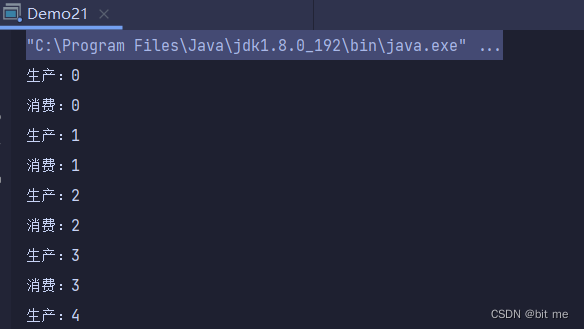
【多线程】多线程案例
✨个人主页:bit me👇 ✨当前专栏:Java EE初阶👇 ✨每日一语:we can not judge the value of a moment until it becomes a memory. 目 录🍝一. 单例模式🍤1. 饿汉模式实现🦪2. 懒汉模…...

【IoT】嵌入式驱动开发:IIC子系统
IIC有三种接口实现方式 三种时序对比: 图1 IIC子系统组成 图2 图3 IIC操作流程 设备端 1.i2c_get_adapter 2.i2c_new_device(相当于register设备) 3.I2c_put_adapter 驱动端 1.填充i2c_driver 2.i2c_add_driver(相当于register驱动) 3.在probe中建立访问方式 client相…...
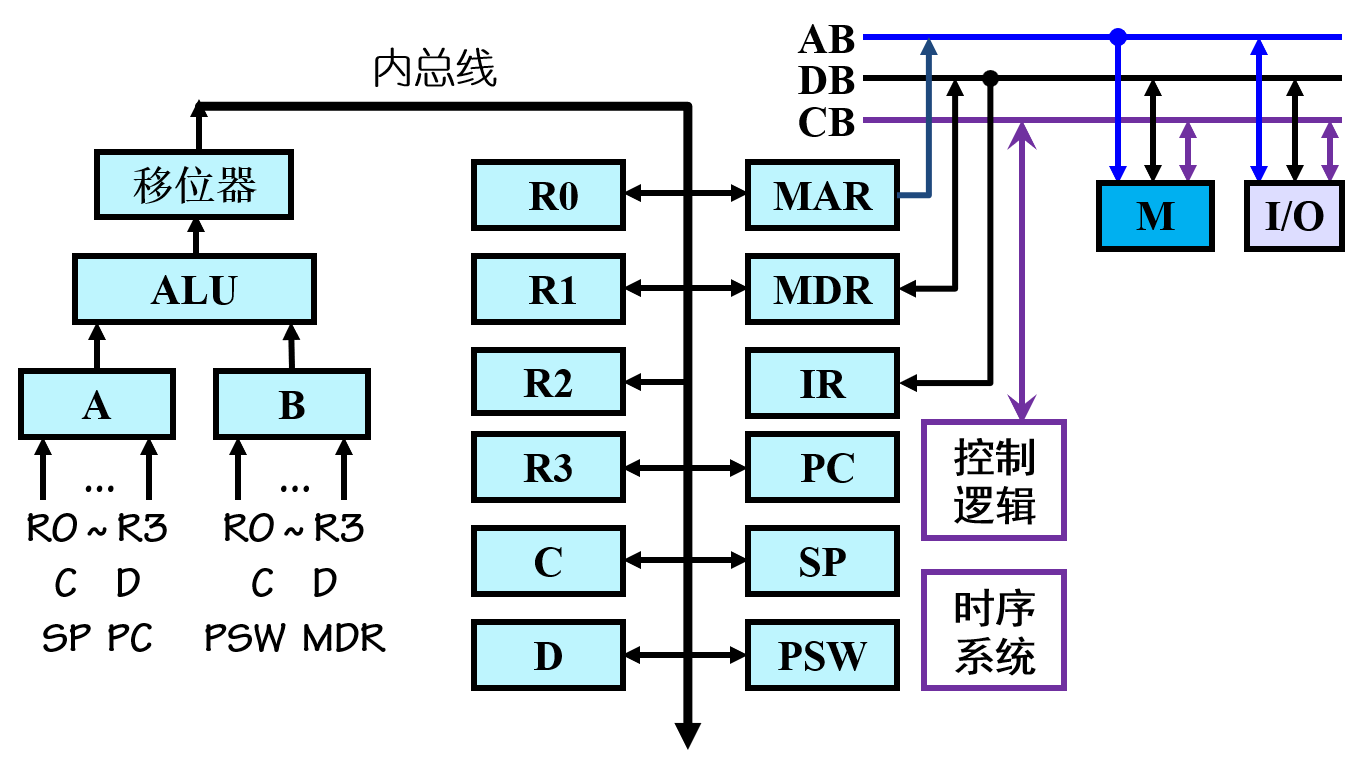
DJ2-4 进程同步(第一节课)
目录 2.4.1 进程同步的基本概念 1. 两种形式的制约关系 2. 临界资源(critical resource) 3. 生产者-消费者问题 4. 临界区(critical section) 5. 同步机制应遵循的规则 2.4.2 硬件同步机制 1. 关中断 2. Test-and-Set …...
AI独立开发者:一周涨粉8万赚2W美元;推特#HustleGPT GPT-4创业挑战;即刻#AIHackathon创业者在行动 | ShowMeAI周刊
👀日报&周刊合辑 | 🎡生产力工具与行业应用大全 | 🧡 点赞关注评论拜托啦! 这是ShowMeAI周刊的第7期。聚焦AI领域本周热点,及其在各圈层泛起的涟漪;拆解AI独立开发者的盈利案例,关注中美AIG…...
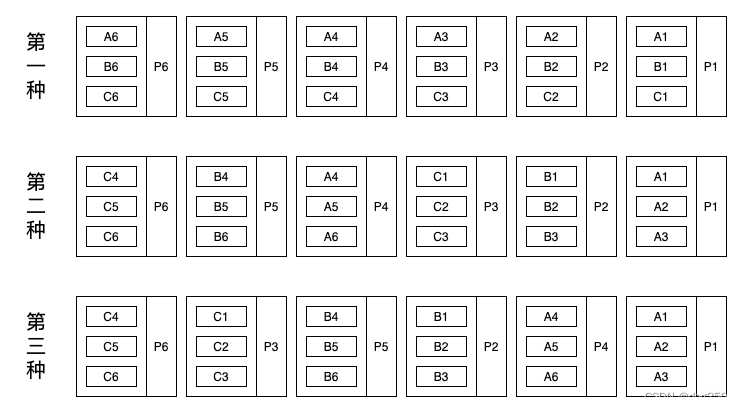
不要迷信 QUIC
很多人都在强调 QUIC 能解决 HoL blocking 问题,不好意思,我又要泼冷水了。假设大家都懂 QUIC,不再介绍 QUIC 的细节,直接说问题。 和 TCP 一样,QUIC 也是一个基于连接的,保序的可靠传输协议,T…...

【28】Verilog进阶 - RAM的实现
VL53 单端口RAM 1 思路 简简单单,读取存储器单元值操作即可 2 功能猜想版 说明: 下面注释就是我对模块端口信号 自己猜测的理解。 因为题目并没有说清楚,甚至连参考波形都没有给出。 唉,这就完全是让人猜测呢,如果一点学术背景的人来刷题,指定不容易!! 好在,我有较为…...

【MySQL】聚合查询
目录 1、前言 2、插入查询结果 3、聚合查询 3.1 聚合函数 3.1.1 count 3.1.2 sum 3.1.3 avg 3.1.4 max 和 min 4、GROUP BY 子句 5、HAVING 关键字 1、前言 前面的内容已经把基础的增删改查介绍的差不多了,也介绍了表的相关约束, 从本期开始…...

初时STM32单片机
目录 一、单片机基本认知 二、STM系列单片机命名规则 三、标准库与HAL库区别 四、通用输入输出端口GPIO 五、推挽输出与开漏输出 六、复位和时钟控制(RCC) 七、时钟控制 八、中断和事件 九、定时器介绍 一、单片机基本认知 单片机和PC电脑相比…...

debian部署docker(傻瓜式)
提示:文章写完后,目录可以自动生成,如何生成可参考右边的帮助文档 debian10部署dockerdebian10部署docker(傻瓜式)一、准备工作二、**使用 APT 安装,注意要先配置apt网络源**1.配置网络源2.官方下载三、安装…...
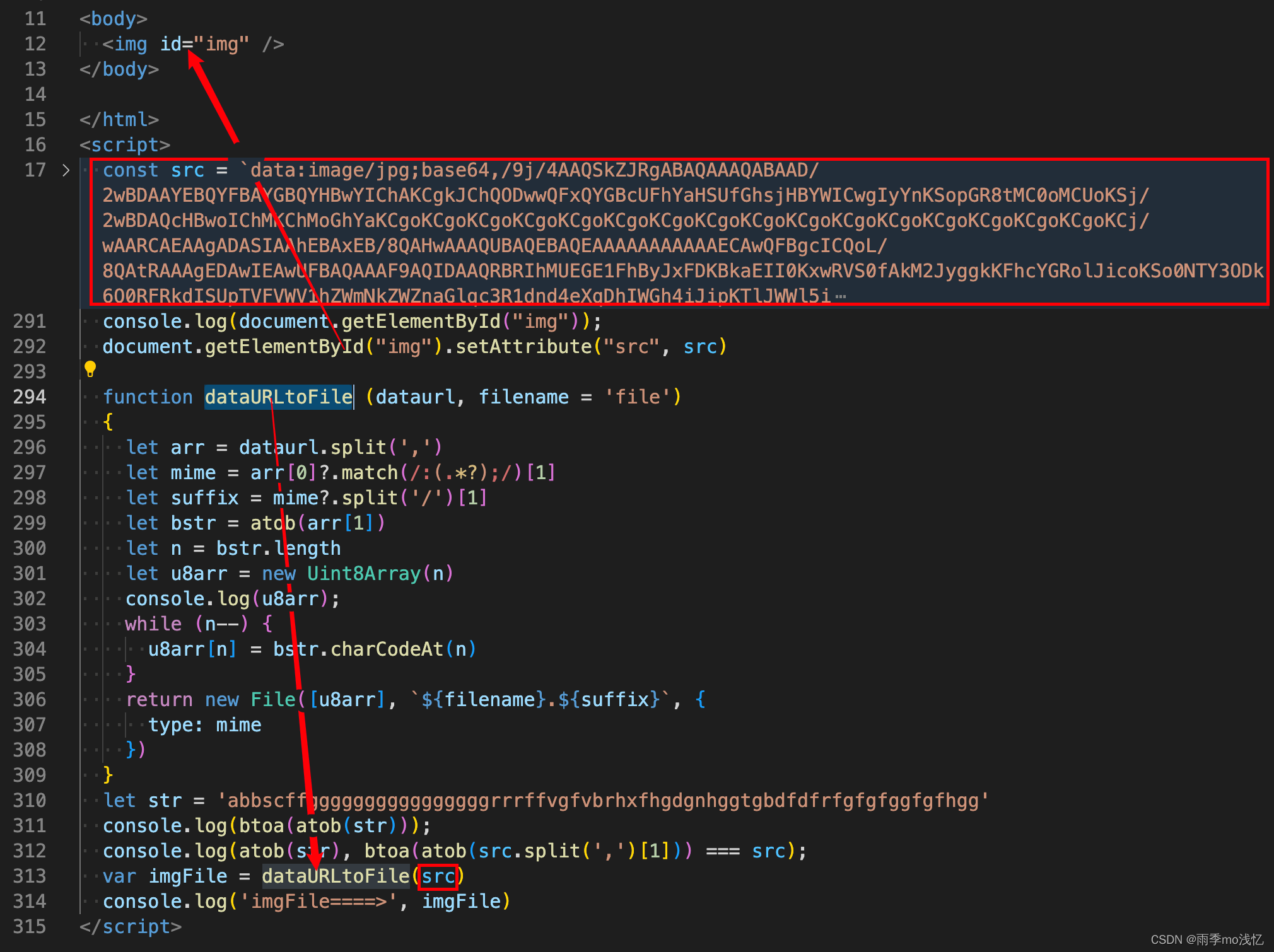
JS判断是否为base64字符串如何转换为图片src格式
需求背景 : 如何判断后端给返回的 字符串 是否为 base-64 位 呢 ? 以及如果判断为是的话,如何给它进行转换为 img 标签可使用的那种 src 格式 呢 ? 1、判断字符串是否为 base64 以下方法,可自行挨个试试,…...

【SpringMVC】SpringMVC方式,向作用域对象共享数据(ModelAndView、Model、map、ModelMap)
个人简介:Java领域新星创作者;阿里云技术博主、星级博主、专家博主;正在Java学习的路上摸爬滚打,记录学习的过程~ 个人主页:.29.的博客 学习社区:进去逛一逛~ 向域对象共享数据一、使用 原生ServletAPI二、…...
】实验3 - Activity及数据存储)
本科课程【移动互联网应用开发(Android开发)】实验3 - Activity及数据存储
大家好,我是【1+1=王】, 热爱java的计算机(人工智能)渣硕研究生在读。 如果你也对java、人工智能等技术感兴趣,欢迎关注,抱团交流进大厂!!! Good better best, never let it rest, until good is better, and better best. 近期会把自己本科阶段的一些课程设计、实验报…...

为何在 node 项目中使用固定版本号,而不使用 ~、^?
以语雀 文档为准 使用 ~、^ 时吃过亏希望版本号掌握在自己手里,作者自己升级(跟随官方进行升级,就算麻烦作者,也不想麻烦使用者)虽然 pnpm 很好用,但是不希望在项目中用到(临时性解决问题可以选…...
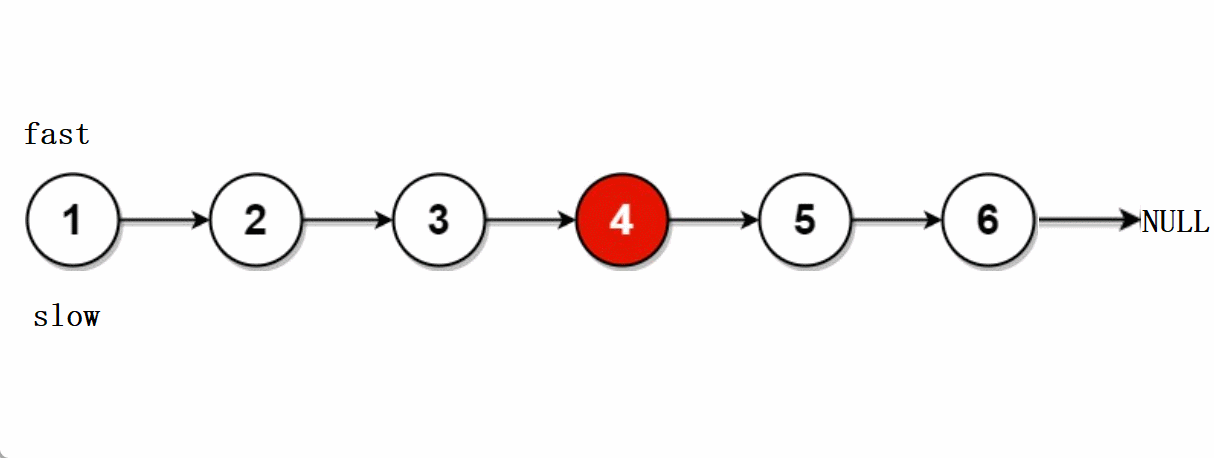
leetcode -- 876.链表的中间节点
文章目录🐨1.题目🐇2. 解法1-两次遍历🍀2.1 思路🍀2.2 代码实现🐁3. 解法2-快慢指针🌾3.1 思路🌾3.2 **代码实现**🐮4. 题目链接🐨1.题目 给你单链表的头结点head&#…...

企业网络安全防御策略需要考虑哪些方面?
随着企业数字化转型的加速,企业网络安全面临越来越多的威胁。企业网络安全不仅仅关乎企业数据的安全,还关系到企业的声誉和利益,因此,建立全面的网络安全防御策略至关重要。 企业网络安全防御策略的实现需要考虑以下几个方面&…...
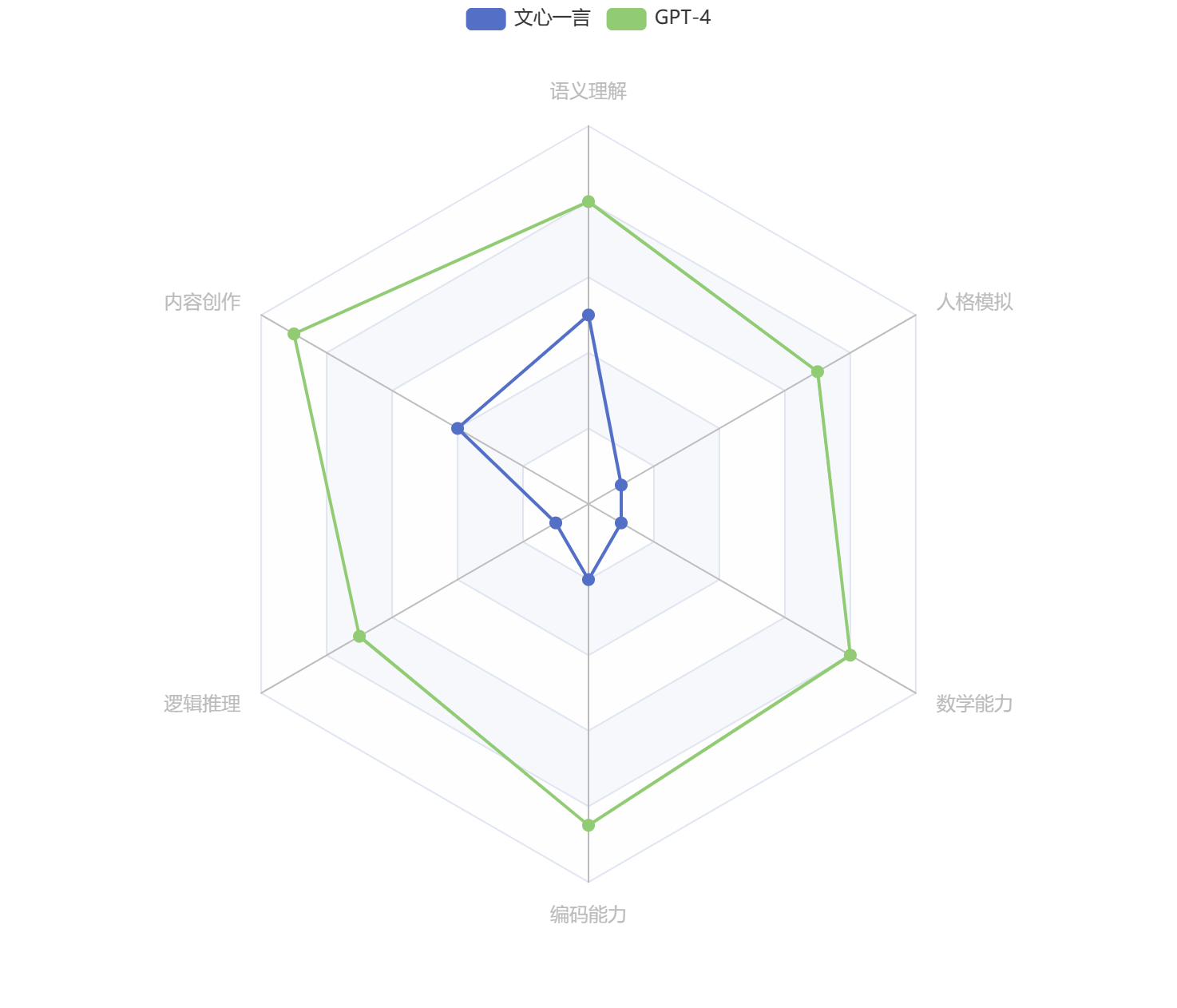
文心一言 vs. GPT-4 —— 全面横向比较
文心一言 vs. GPT-4 —— 全面横向比较 3月15日凌晨,OpenAI发布“迄今为止功能最强大的模型”——GPT-4。我第一时间为大家奉上了体验报告《OpenAI 发布GPT-4——全网抢先体验》。 时隔一日,3月16日下午百度发布大语言模型——文心一言。发布会上&…...
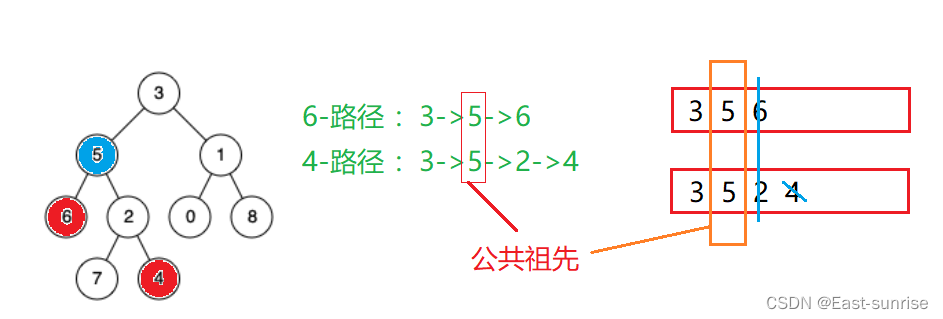
【进阶数据结构】二叉搜索树经典习题讲解
🌈感谢阅读East-sunrise学习分享——[进阶数据结构]二叉搜索树 博主水平有限,如有差错,欢迎斧正🙏感谢有你 码字不易,若有收获,期待你的点赞关注💙我们一起进步 🌈我们在之前已经学习…...
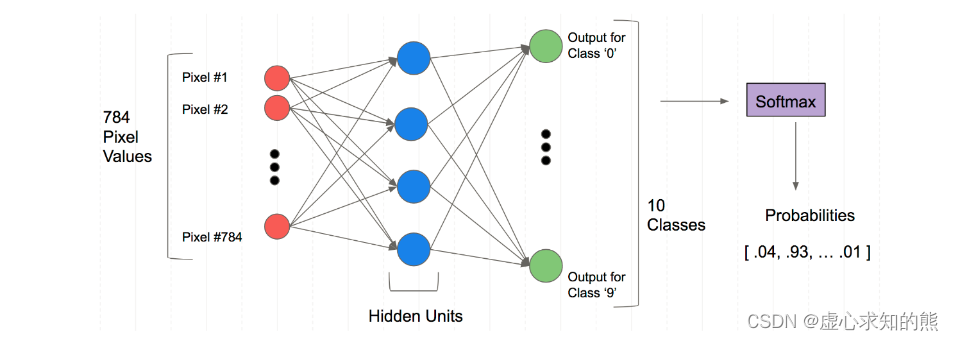
PyTorch 之 神经网络 Mnist 分类任务
文章目录一、Mnist 分类任务简介二、Mnist 数据集的读取三、 Mnist 分类任务实现1. 标签和简单网络架构2. 具体代码实现四、使用 TensorDataset 和 DataLoader 简化本文参加新星计划人工智能(Pytorch)赛道:https://bbs.csdn.net/topics/613989052 一、Mnist 分类任…...

如何实现用pillow库来实现给图片加滤镜?
使用Pillow库可以非常容易地给图片加滤镜。Pillow库是Python图像处理的一个强大库,提供了多种滤镜效果,如模糊、边缘检测、色彩增强等。 下面是使用Pillow库实现给图片加滤镜的简单步骤: 安装Pillow库:首先需要安装Pillow库。可…...

在软件开发中正确使用MySQL日期时间类型的深度解析
在日常软件开发场景中,时间信息的存储是底层且核心的需求。从金融交易的精确记账时间、用户操作的行为日志,到供应链系统的物流节点时间戳,时间数据的准确性直接决定业务逻辑的可靠性。MySQL作为主流关系型数据库,其日期时间类型的…...

系统设计 --- MongoDB亿级数据查询优化策略
系统设计 --- MongoDB亿级数据查询分表策略 背景Solution --- 分表 背景 使用audit log实现Audi Trail功能 Audit Trail范围: 六个月数据量: 每秒5-7条audi log,共计7千万 – 1亿条数据需要实现全文检索按照时间倒序因为license问题,不能使用ELK只能使用…...

uniapp微信小程序视频实时流+pc端预览方案
方案类型技术实现是否免费优点缺点适用场景延迟范围开发复杂度WebSocket图片帧定时拍照Base64传输✅ 完全免费无需服务器 纯前端实现高延迟高流量 帧率极低个人demo测试 超低频监控500ms-2s⭐⭐RTMP推流TRTC/即构SDK推流❌ 付费方案 (部分有免费额度&#x…...

QT: `long long` 类型转换为 `QString` 2025.6.5
在 Qt 中,将 long long 类型转换为 QString 可以通过以下两种常用方法实现: 方法 1:使用 QString::number() 直接调用 QString 的静态方法 number(),将数值转换为字符串: long long value 1234567890123456789LL; …...

如何理解 IP 数据报中的 TTL?
目录 前言理解 前言 面试灵魂一问:说说对 IP 数据报中 TTL 的理解?我们都知道,IP 数据报由首部和数据两部分组成,首部又分为两部分:固定部分和可变部分,共占 20 字节,而即将讨论的 TTL 就位于首…...
)
【HarmonyOS 5 开发速记】如何获取用户信息(头像/昵称/手机号)
1.获取 authorizationCode: 2.利用 authorizationCode 获取 accessToken:文档中心 3.获取手机:文档中心 4.获取昵称头像:文档中心 首先创建 request 若要获取手机号,scope必填 phone,permissions 必填 …...

JavaScript基础-API 和 Web API
在学习JavaScript的过程中,理解API(应用程序接口)和Web API的概念及其应用是非常重要的。这些工具极大地扩展了JavaScript的功能,使得开发者能够创建出功能丰富、交互性强的Web应用程序。本文将深入探讨JavaScript中的API与Web AP…...
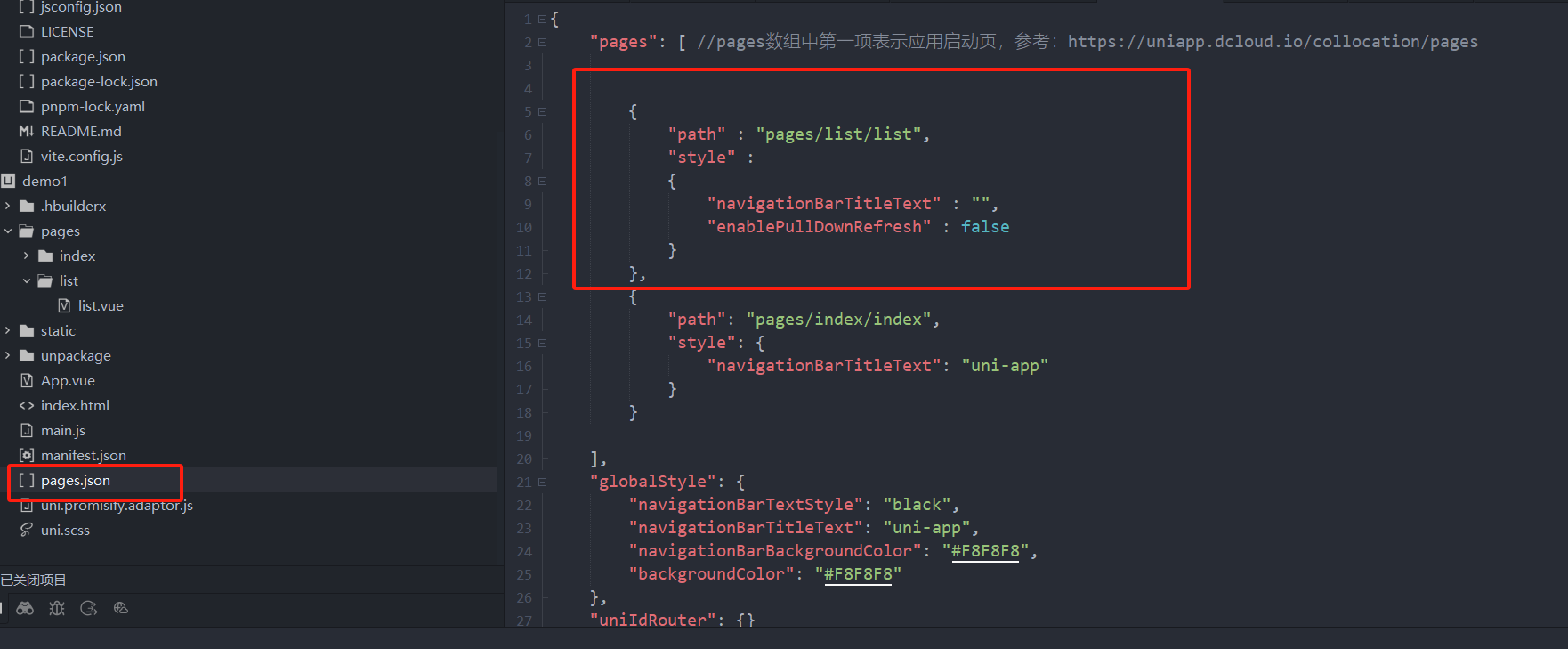
uniapp 小程序 学习(一)
利用Hbuilder 创建项目 运行到内置浏览器看效果 下载微信小程序 安装到Hbuilder 下载地址 :开发者工具默认安装 设置服务端口号 在Hbuilder中设置微信小程序 配置 找到运行设置,将微信开发者工具放入到Hbuilder中, 打开后出现 如下 bug 解…...

微服务通信安全:深入解析mTLS的原理与实践
🔥「炎码工坊」技术弹药已装填! 点击关注 → 解锁工业级干货【工具实测|项目避坑|源码燃烧指南】 一、引言:微服务时代的通信安全挑战 随着云原生和微服务架构的普及,服务间的通信安全成为系统设计的核心议题。传统的单体架构中&…...

DiscuzX3.5发帖json api
参考文章:PHP实现独立Discuz站外发帖(直连操作数据库)_discuz 发帖api-CSDN博客 简单改造了一下,适配我自己的需求 有一个站点存在多个采集站,我想通过主站拿标题,采集站拿内容 使用到的sql如下 CREATE TABLE pre_forum_post_…...
